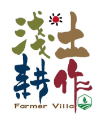Description
🚚 Fastest delivery time: 3-day pre-order in advance.
Reminder: This product is not suitable for 2-3 day delivery arrangements, delivery may be delayed, please check first if you have any questions.
🐝 Supplier / Place of Origin: Farmer Villa / Kam Tin Pat Heung
🔖 Certification: HKORC C22018
🌱 Supplier introduction: Local herbs, no pesticides, fertilisers, natural planting methods. Including herbs, edible flowers, scented teas, cultivated, grown and made on high-quality farms in the West New Territories. Made with heart, Made in HK! All crops are free of pesticides and fertilisers. The most important thing is to eat healthy and happy during the epidemic. The farm supplies edible flowers, herbs, local vegetables and fruits.
🛍 Product Information:
ペンタス(学名: Pentas lanceolata; 英: Egyptian starcluster)は、アフリカの多くの地域とイエメンに自生するアカネ科の低木。同じ科に属するサンタンカの花と姿が似ている為、和名をクササンタンカ(草山丹花)と言う。
草花として知られており、バタフライガーデン(英語版)に植えられる。
語源は古代ギリシア語で「5」を意味する「πέντε」で、ラテン文字に翻字すると「pente」となる。これは本種の花冠が5つの花弁を持つ事に由来する。
花弁の姿が星形の為、星に願いを籠める意味合いで花言葉は「願い事」、「希望が叶う」とされている。

Pentas lanceolata, commonly known as Egyptian starcluster, is a species of flowering plant in the madder family, Rubiaceae that is native to tropical Africa from Sudan to Democratic Republic of the Congo and Mozambique, as well as Saudi Arabia and Yemen on the Arabian Peninsula. It is known for its wide use as a garden plant where it often accompanies butterfly gardens.
Edible flowers are not only a visual feast, but also a source of nutrition. Most edible flowers have no added pigments and are rich in vitamins.
Antioxidants: Rich in vitamin E, anthocyanins, etc., which help fight free radicals.
Pollen nutrition: Contains carbohydrates, proteins, and micronutrients such as flavonoids and carotenoids.
Nectar and style: Natural polysaccharides and fibers, adding flavor to dishes.
Natural allies to protect your eyes
The antioxidant components of edible flowers help eye health, and traditional Chinese medicine also praises the eyesight benefits of flowers such as chrysanthemums
Vitamin A (carotene): Prevent night blindness and corneal lesions
Vitamin C, E: Double protection of water-soluble and oil-soluble antioxidants
Anthocyanins and lutein: Slow down retinal degeneration
Who is suitable for edible flowers?
Although edible flowers have many benefits, they are not suitable for everyone. People with favism should not eat honeysuckle and wintersweet, and friends who use diuretic drugs need to consult a doctor first. Pregnant women may be allergic to edible flowers, and children under one year old are not recommended to eat flowers. People with gout should avoid eating pollen, and people with diabetes should be aware that polysaccharides in nectar may affect blood sugar levels.
How to handle and choose edible flowers
After buying edible flowers, you need to clean them and store them in the refrigerator. You can cover the flowers with wet kitchen paper, but don't make the paper towel too wet to avoid pressing the flowers. This can keep edible flowers for three to four days, but it is recommended that you eat them as soon as possible. Avoid picking flowers on the roadside as they may have been treated with pesticides during the planting process. When choosing edible flowers, it is best to buy them from reliable distributors.
Storage Instructions
Store in the refrigerator away from the wind, and can be stored for about 3 to 5 days. The storage time will be affected by transportation, when to buy, etc. Crop yields will be affected by weather and seasons, please pay attention.
Please dry the water, store in the refrigerator, and eat as soon as possible.
In the hot summer, the high temperature exceeds 25 degrees, which may affect the freshness of flowers.
Healthy recipes for edible flowers
Dish: Broccoli and Scallop Garden
This is a healthy, delicious, and easy-to-make dish. Scallops and broccoli are combined with shiso and nasturtium to create a beautiful garden effect.
Broccoli and Scallop Garden
Ingredients:
- Shiso ∙ Nasturtium ∙ 10 scallops ∙ 1 broccoli
- 200 ml chicken broth ∙ 15 g oyster sauce ∙ 40 g dried scallops ∙ 5 g minced ginger
- 2 cloves of garlic ∙ 10 spring roll wrappers ∙ Chili powder ∙ Lemon peel
Method
1. Prepare broccoli
• Break the broccoli into small florets and soak them in salt water for 10 to 20 minutes.
• Remove the coarse fibrous skin at the bottom and cut into desired shapes with a mold.
• Boil the broccoli for one minute and drain.
2. Prepare scallops
• Soak scallops in milk for 10 minutes to remove the fishy smell and enhance the smooth texture.
• Use kitchen paper to dry the scallops thoroughly, tear off the adductor muscle of the scallops, and do not need to marinate to preserve their natural flavor.
• Fry in a pan with oil until golden brown, fry for about 1 to 2 minutes on each side, and set aside.
3. Make the sauce
• Add a small amount of oil to the pan and stir-fry the minced ginger and minced garlic.
• Add chicken broth and scallops and cook until the scallops fall apart.
• Add oyster sauce, bring to a boil, then thicken with cornstarch water and cook until thick.
4. Make scallop tarts
• Place spring roll skin on the tart mold to press into the shape of tart crust, and bake at 180°C for 5 minutes to set into a crispy tart crust.
• Place the mustard-flavored nasturtium, broccoli and scallops on the tart crust.
• Add a little scallop juice, chopped broccoli, and sprinkle with lemon zest.
• Garnish with basil flowers
5. Creative plating
• Crush the dried basil leaves into powder and sprinkle on butter paper to make a meadow.
• Place the inverted broccoli on the plate to form a tree shape.
• Cut the scallops in half and place on the plate.
• Garnish with edible flowers (such as pansies or roses).


















